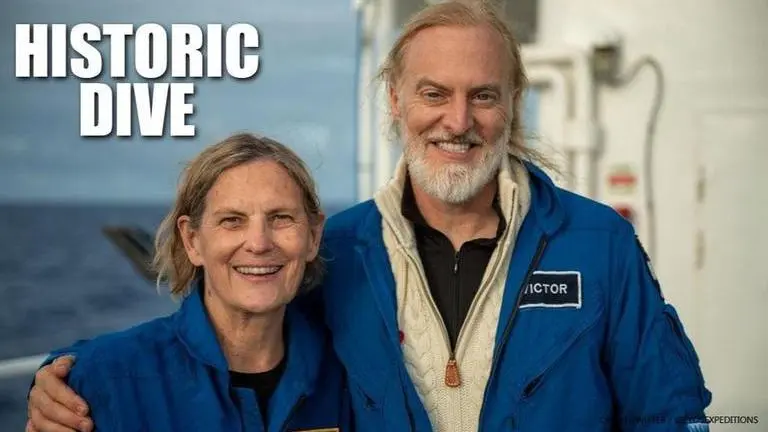Updated 9 June 2020 at 13:38 IST
Former NASA astronaut Kathy Sullivan becomes first woman to reach Earth's deepest point
NASA astronaut Kathy Sullivan became the first woman to reach Challenger Deep, the deepest point on earth, located at the southern end of the Mariana Trench.
- Science News
- 2 min read

Former NASA astronaut Kathy Sullivan became the first woman to reach Challenger Deep, the deepest point on earth, located at the southern end of the Mariana Trench. EYOS Expeditions, a company coordinating the logistics of the mission, announced on June 8 that it coordinated a call between the International Space Station and the DSSV Pressure Drop to help the submersible return from a full ocean depth dive in the Challenger Deep, with Kathy Sullivan and pilot Victor Vescovo onboard.
With the historic dive, Dr Sullivan, an astronaut and oceanographer, also became the first human to walk in the space and descend to the deepest point in the ocean. In a statement published by EYOS expeditions, Dr Sullivan said that it was an extraordinary day for her as a hybrid oceanographer and astronaut.
“A once in a lifetime day, seeing the moonscape of the Challenger Deep and then comparing notes with my colleagues on the ISS about our remarkable reusable inner-space outer-spacecraft,” said the 68-year-old astronaut.
Eight person to reach the bottom
On October 11, 1984, Dr Sullivan became the first woman to walk in space and is now the 8th person and first woman to reach the bottom of the Challenger Deep. Last year, Vescovo became the fourth person in history to reach Challenger Deep as part of his Five Deeps expedition. He expressed pleasure to have Dr Sullivan as an oceanographer during the dive, and then as an astronaut to talk to the ISS. Vescovo, who dived for the third time to reach Challenger Deep, took to Twitter to congratulate Dr Sullivan for accomplishing the historic record.
Advertisement
Just back up from Challenger Deep! My co-pilot was Dr. Kathy Sullivan - now the first woman to the bottom of the ocean and a former astronaut as well as NOAA Administrator! Big congratulations to her! This was my 3rd time to the bottom. Well done by the crew, Triton, and EYOS.
— Victor Vescovo (@VictorVescovo) June 7, 2020
EYOS Expeditions expedition leader Rob McCallum said in a statement that it was amazing to set up a conversation between two “spacecraft”. He added that the exploration highlighted the vast span of human endeavour while at the same time linking us close together as fellow explorers.
Advertisement
Published By : Kunal Gaurav
Published On: 9 June 2020 at 13:38 IST
